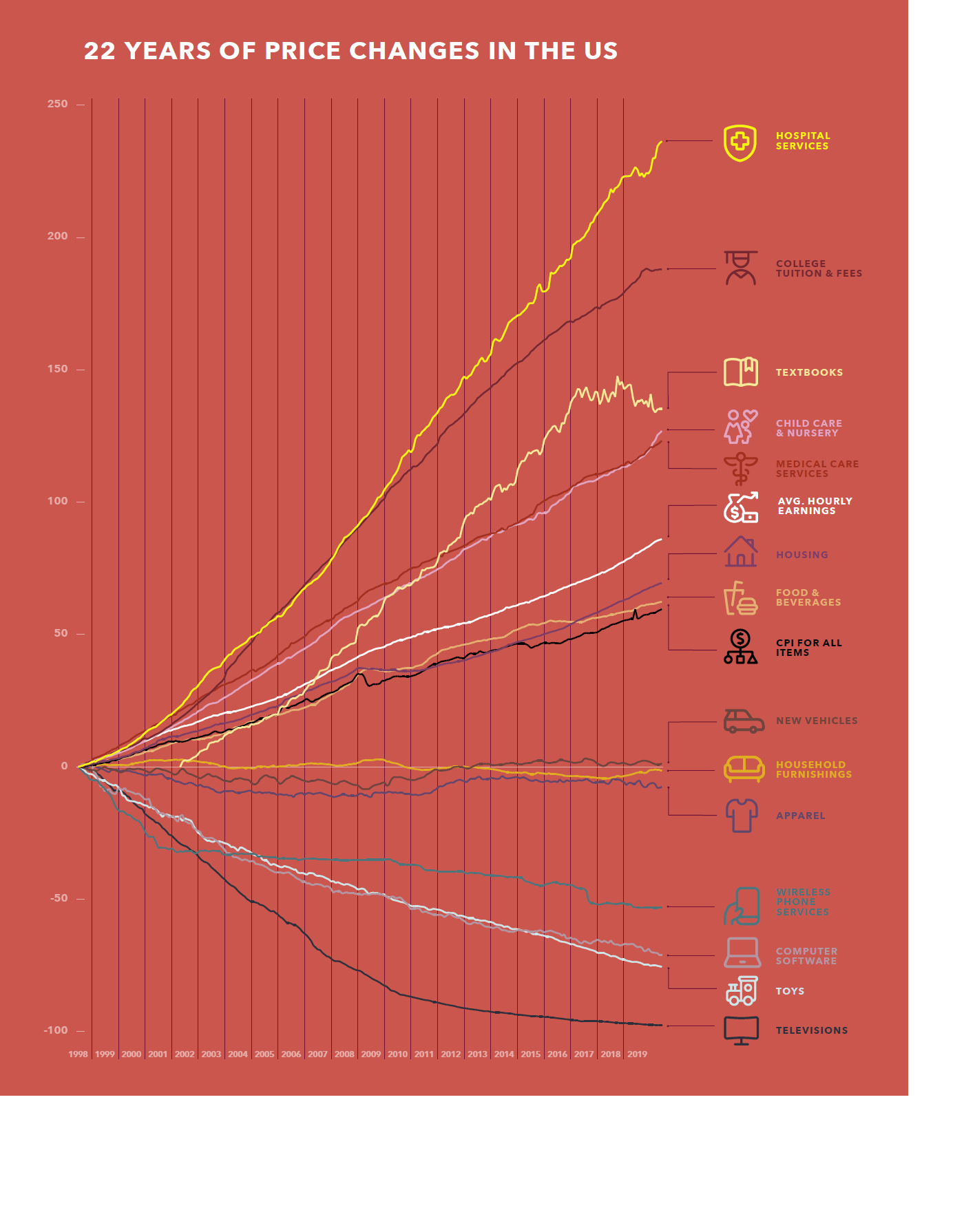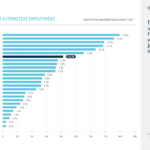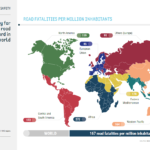Prices of basic needs for living have soared in the US in the past few years while discretionary items have become cheaper. For example, housing prices are unaffordable in many parts of the country. Though shelter is the most basic need of any human being it is very expensive and housing costs continue to rise due to a variety of factors including inflation and policies. Similarly Education has become expensive especially at the college level where a third-rate school can cost five figures in tuition alone for a 4-year degree. Of all the basic human needs, healthcare is the most important and unfortunately the most expensive. Healthcare costs have in fact increased more than college tuition since 1998. It should be noted that most of the money spent on healthcare does not actually go towards the treatment of the patient but rather towards administration and paperwork operations run by insurance companies and to some extent the providers.
The following chart shows the price changes of select consumer goods and services since 1998:
Click to enlarge
Source: The Ruffer Review 2020, Ruffer LLC, UK
Below is a brief excerpt from the above report:
THIS SNAPSHOT OF THE US ECONOMY SHOWS THE DIVERGENCE in the price of selected consumer goods and services.
Mass consumer products such as TVs, toys and mobile phone services have become both cheaper and of much higher quality, thanks to improvements in technology. Cars have also improved vastly, without becoming less affordable.
By contrast, things that contribute to long-term quality of life – such as healthcare and education – have become significantly more expensive. Here, the rate of increase in prices has far surpassed the wage growth of the average American consumer. Healthcare costs have risen by more than 236% while a college education costs 187% more than it
did in 1998.
The key takeaway is that in the current structure of the economy, necessary items are expensive while useless items are cheap. The million dollar question is what will it take to fix this fundamental flaw in the system.
Earlier:
- College Tuition in the U.S. Continues To Soar
- On the Continuous Rise of College Tuition in the U.S.
- Why is College Tuition Increasing Consistently in the U.S.?




